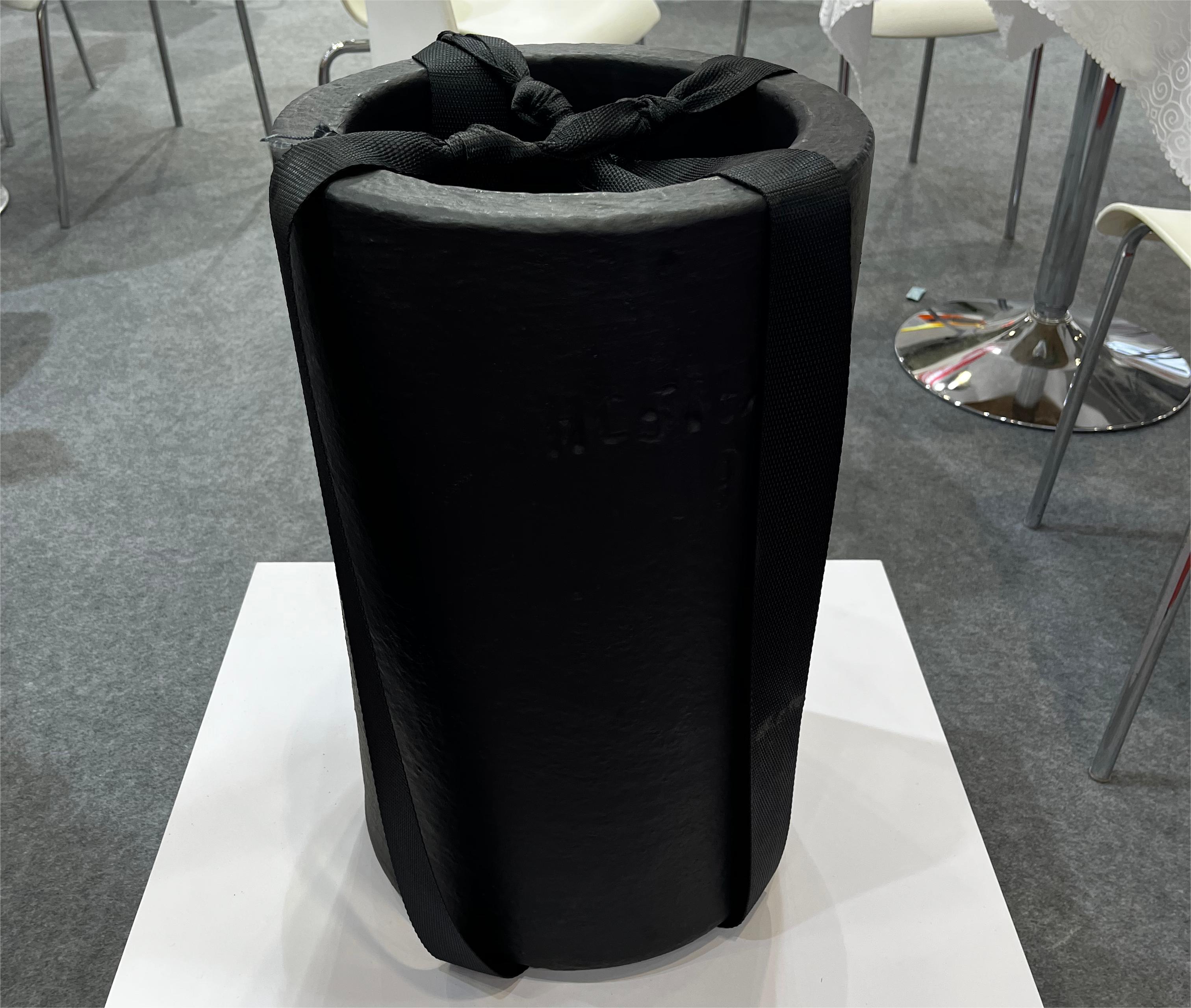
Graphite silicon carbide crucible, as critical components in various industrial processes, face potential problems due to long-term use. Longitudinal cracks were observed in the crucible walls, indicating potential structural defects that could compromise its functionality and safety.
One of the concerning observations was the development of a single longitudinal crack extending from the top edge of the crucible. This may occur due to rapid heating of the crucible, especially when the bottom and lower edges are exposed to higher temperatures than the top. In addition, the use of inappropriate crucible tongs or impact on the upper edge of the ingot may also lead to the formation of these cracks.
Additionally, the presence of multiple parallel longitudinal cracks extending from the top edge of the crucible raised additional concerns. This phenomenon may be related to the pressure exerted directly by the furnace lid on the crucible or the presence of a significant gap between the furnace lid and the crucible. These conditions can lead to increased oxidation of the crucible, ultimately causing cracks to form and compromising its structural integrity.
In addition to cracks on the top edge, longitudinal cracks were also found on the sides of the crucible. These cracks are usually caused by internal pressure, often caused by placing a cooled wedge of cast material laterally into the crucible. The expansion of the wedge-shaped casting material when heated can exert significant pressure on the crucible, leading to the development of cracks and potential structural damage.
The presence of these cracks is a clear indication that the crucible may be approaching or has reached the end of its useful life. The thinning of the crucible wall at the crack further highlights that the crucible may not be able to withstand excessive pressure, posing a significant risk to the overall industrial process in which it is used.
Addressing these issues is critical to ensuring that industrial processes that rely on graphite silicon carbide crucible continue to operate safely and efficiently. Industrial operators and maintenance personnel must closely monitor the condition of graphite silicon carbide crucible and take proactive measures to reduce the risk of structural failure.
A regular inspection and maintenance protocol should be established to detect early signs of crucible wear and damage. In addition, proper heating techniques and the use of suitable handling equipment (such as crucible tongs) are crucial to prevent the formation of cracks and ensure the longevity of the crucible in an industrial environment.
In addition, the design and operation of the furnace should be carefully evaluated to minimize direct pressure on the crucible and prevent excessive oxidation, which can lead to the formation of cracks. Taking steps to control internal pressure, especially when dealing with materials that expand significantly when heated, is critical to protecting the crucible from structural damage.
In summary, the presence of longitudinal cracks in graphite silicon carbide crucible requires immediate attention and remedial measures to prevent potential hazards and disruptions in industrial processes. By prioritizing regular maintenance, proper handling procedures and optimizing furnace operations, industries can safeguard the integrity of their graphite silicon carbide crucible and maintain the reliability of their manufacturing and production activities.
Post time: Apr-03-2024
